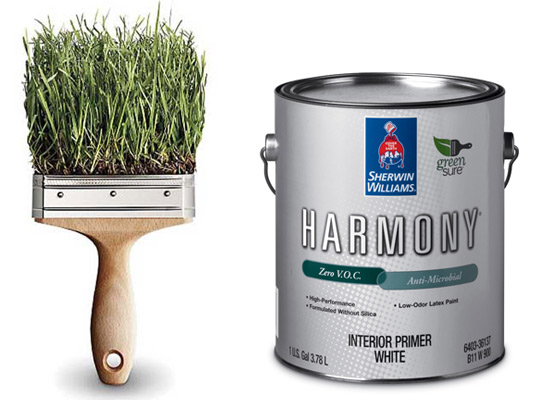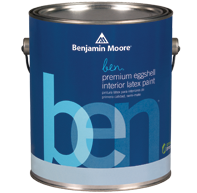 Many people are confused about low and no VOC paints. Manufacturers tout them, but are the products any good? Consumers who arm themselves with knowledge can make better decisions about the paint products they use.
Many people are confused about low and no VOC paints. Manufacturers tout them, but are the products any good? Consumers who arm themselves with knowledge can make better decisions about the paint products they use.
What Are VOC Paints?
VOC stands for volatile organic compound, which is any compound that contains carbon in its molecules. These compounds release a large number of molecules that evaporate in the air and affect air quality.
VOCs have traditionally been added to paint for a variety of reasons, including as a fungicide and to prevent mildew, both of which extend the shelf-life of products. Some common VOCs include formaldehyde, ethylene glycol and benzene.
Paint high in VOC can negatively impact the air quality in a home or office. In some people, VOCs can cause dizziness, asthma flare-ups, watery eyes and headaches. Long-term effects of high VOC paint aren’t as well known, but the U.S. Environmental Protection Agency classifies them as potentially cancer-causing.
Per federal regulations, VOCs are capped at 250 grams per liter for latex paints and 380 grams per liter for oil-based. Many paint companies cap the VOCs in their paints at a much lower level. California, at 50 grams per liter, has the lowest cap in the nation.
In the past, paints with low or no VOCs had less stellar performance than their high-VOC peers. However, paint industry giants such as Benjamin Moore, Glidden, Sherwin Williams, etc. continue to research and improve the performance of these paints, mostly due to consumer demand.
Paints With Low VOC Levels
Low VOC paints are often advertised as low odor, and their labels are clearly marked with VOC gram-level per liter.
Paints with low VOC levels tend to be more expensive than regular paints. Moreover, they tend to not have the same coverage ability as regular paints, which means more coats need to be applied. Paint technology continues to improve, however, and some low VOC paints claim to offer coverage equal to regular paint.
We recommend testing low VOC paints on a smaller painting surface to see if coverage will be enough.
No VOC Paints
Many manufacturers claim that no VOC paints perform as well as paints that contain VOCs, but there are definitely some differences. These include:
1. Walls painted with no VOC paints should not be cleaned with ammonia-based cleaning products, and they should not be cleaned for 30 days after initial paint application. Mild soap and water is recommended to remove dirt and stains.
2. Because these paints do not contain fungicides, they are subject to micro-bacterial contamination. It is recommended that painting tools not be put directly into the paint can. Separate containers should be used, and the paint should be sealed as soon as possible and stored in a cool, dry place.
3. More coats might be necessary in order to achieve the same results as regular VOC paints. Coverage of no VOC paints continues to improve, but in most instances two coats are necessary.
 VOC Summary
VOC Summary
No matter what kind of paint a consumer chooses, the following health-related steps should be taken:
1. Wash brushes and rollers with warm water and soap. Take as much paint off the bristles as you can.
2. Always paint in a well-ventilated room. If ventilation isn’t available, take frequent fresh air breaks.
3. Throwing unused paint into the trash is not environmentally-friendly. Find a hazardous waste disposal facility in your city or neighboring towns.
Choosing the right paint and using it in a healthy way can be done. Take the time to read labels and inform yourself, and you will be well on your way to a productive painting experience.
If painting your home feels like it might be overwhelming to you, give us a call and we’ll be happy to help.
